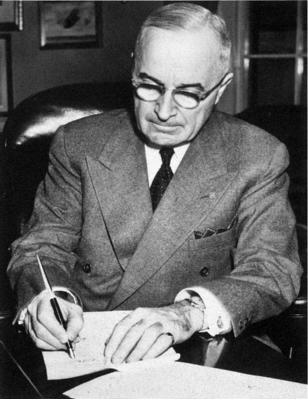Even once the US and USSR had entered into a
"Cold War," did that conflict necessarily have to become
"hot"--did military means have to become the key method for
waging the Cold War?
Unlike the origins of the Cold War, on the question of
militarization, the dispute largely centers on the important event
rather than the key motivation. Most conventional accounts point
to the onset of the Korean War as the time when the Cold War became hot.
But in the last decade-plus, two powerful monographs have challenged
that view. In American Cold War Strategy, Ernest
May suggests that the militarization of the Cold War was, in part,
the classic example of bureaucratic
politics in action, as Paul Nitze, director of the State
Department's Policy Planning Staff, maneuvered his way through the upper
reaches of the Truman administration to bring about the adoption of NSC
68, a more comprehensive national security document than virtually
anyone in the administration deemed possible only 18 months before.
Meanwhile, in an important work of scholarship--in addition to a
partial memoir of his time in office--former Harvard dean and National
Security Advisor McGeorge
Bundy's Danger and Survival argued that the 1950 decision
to develop the H-bomb--a weapon that had no conceivable military
use--represented the key turning point in making military tactics the
primary means through which US national security policy would be
structured. |
